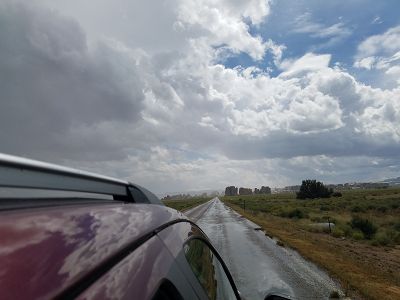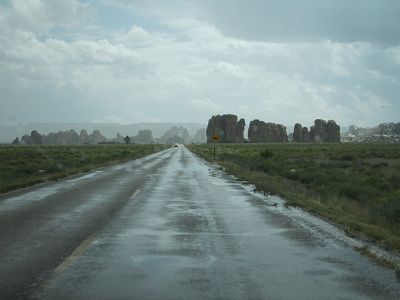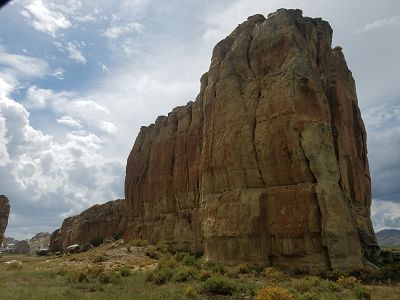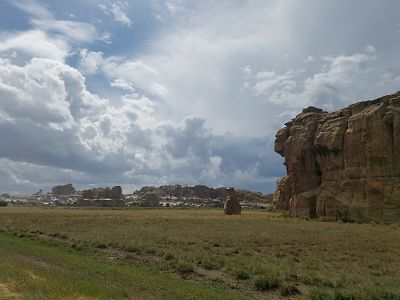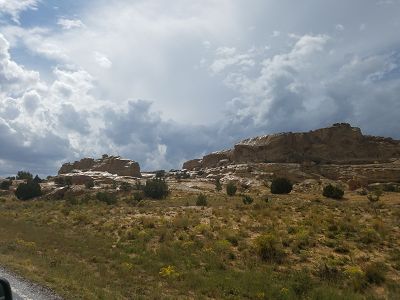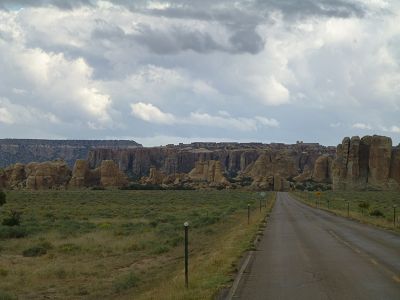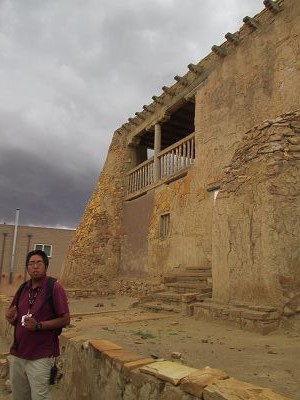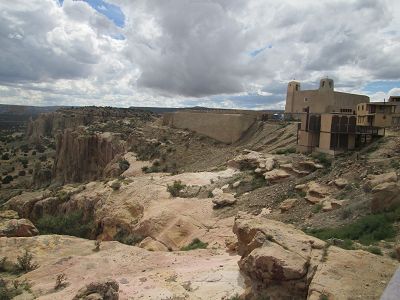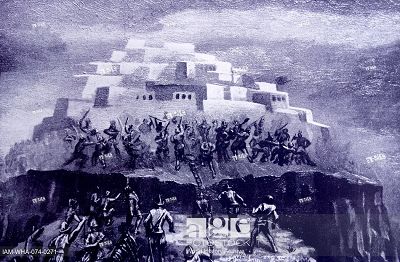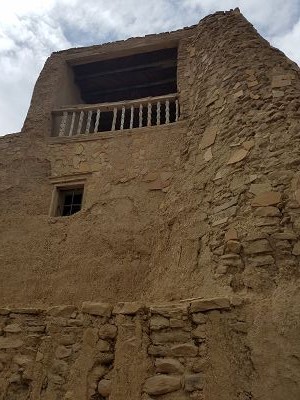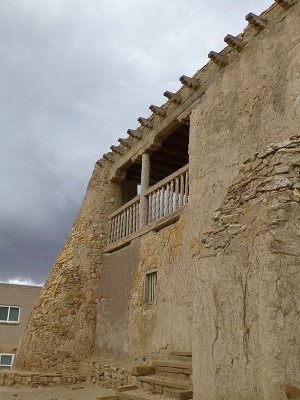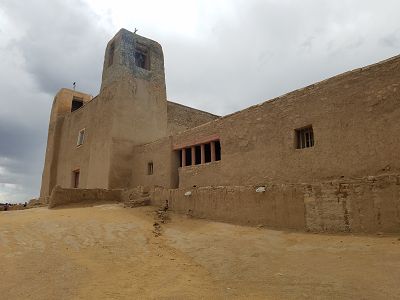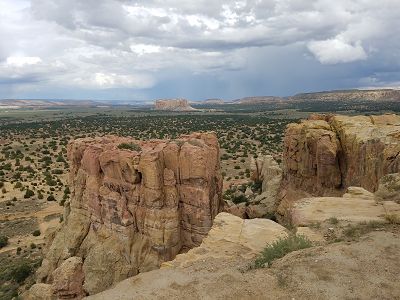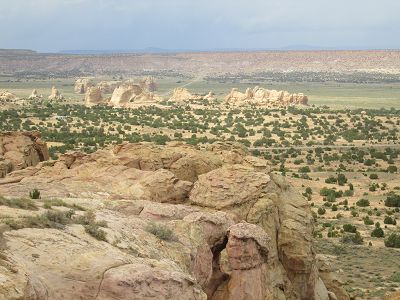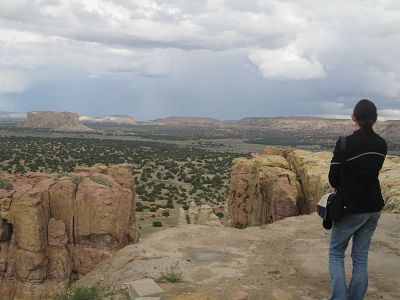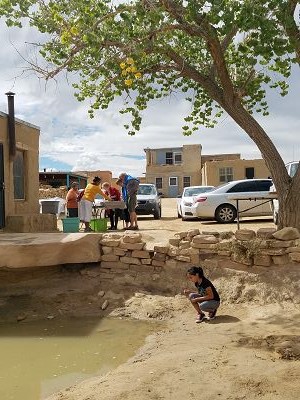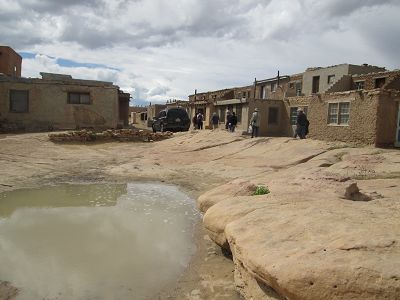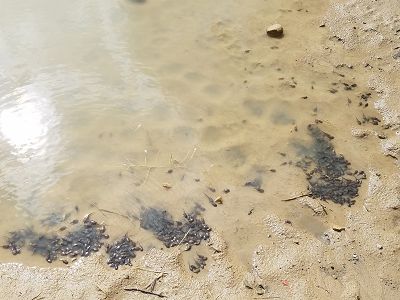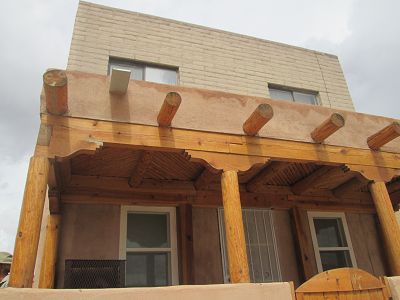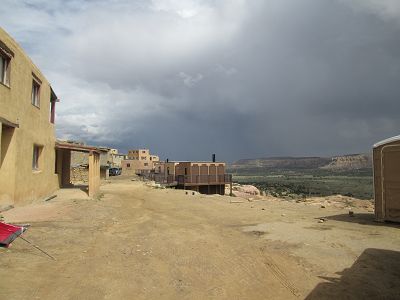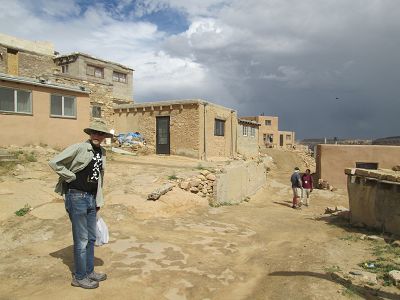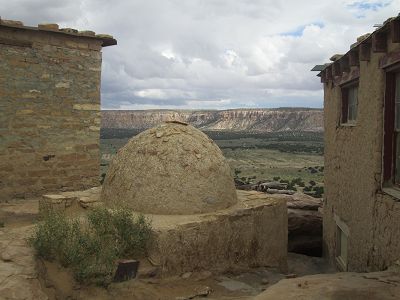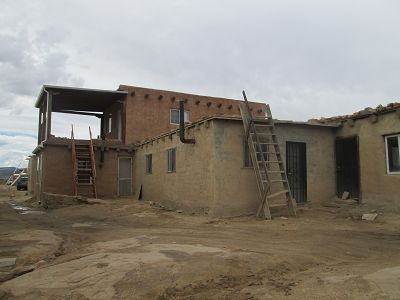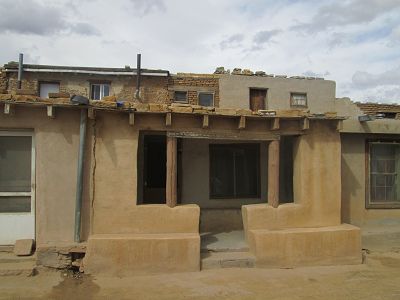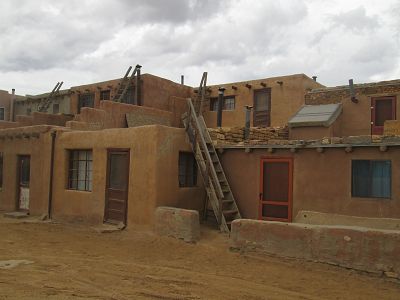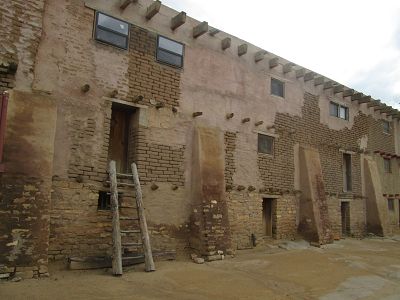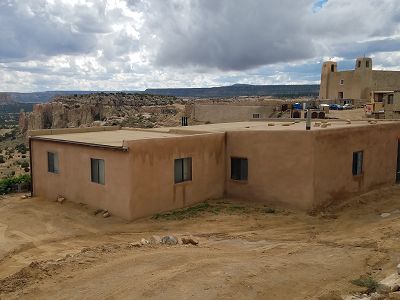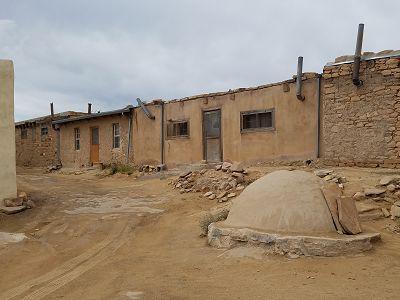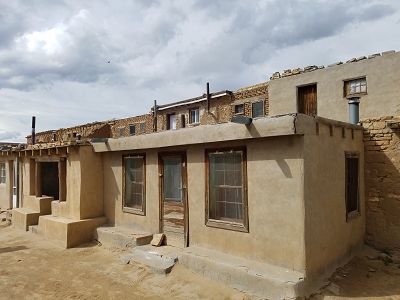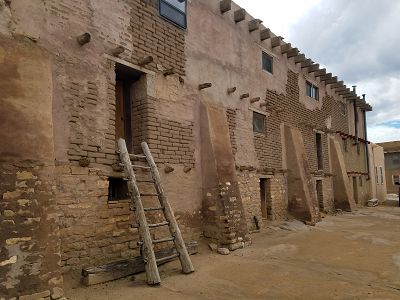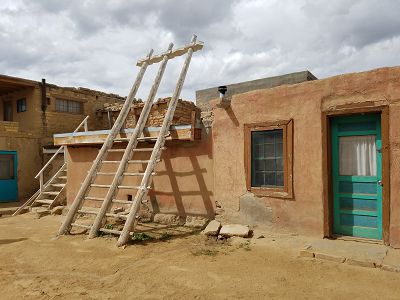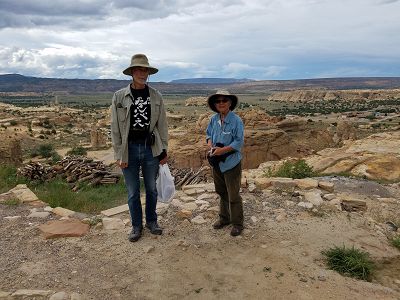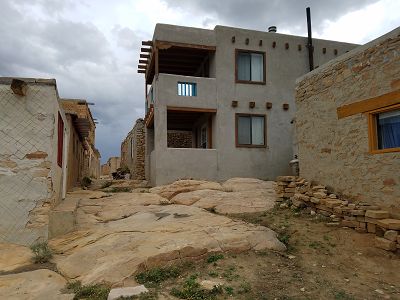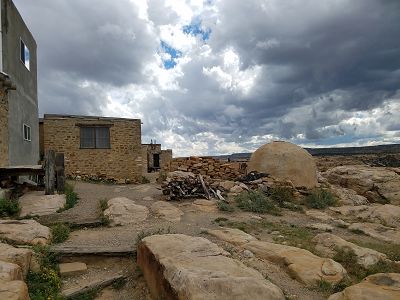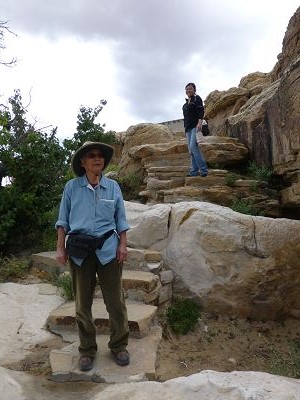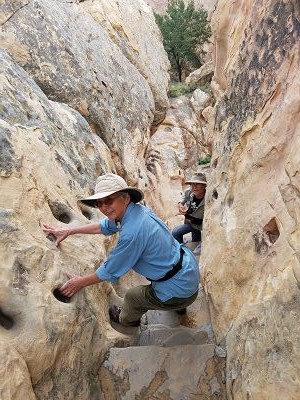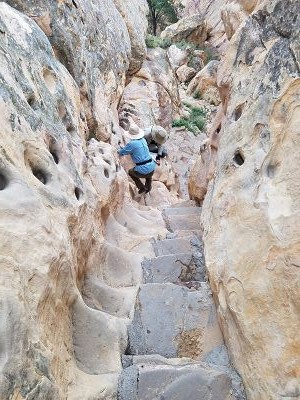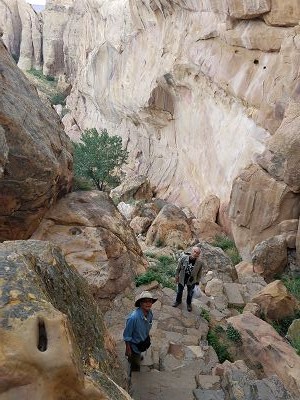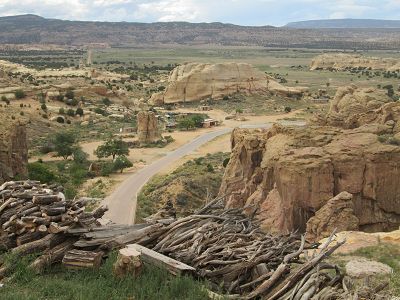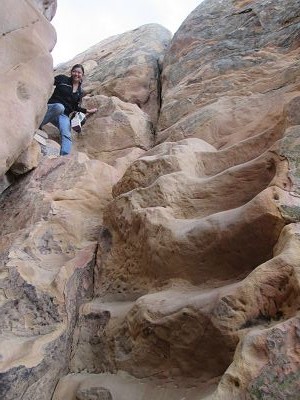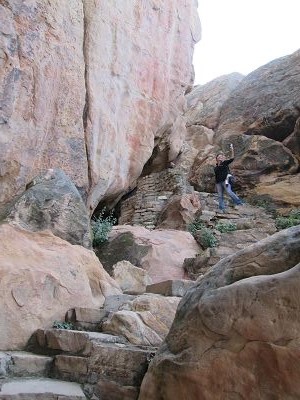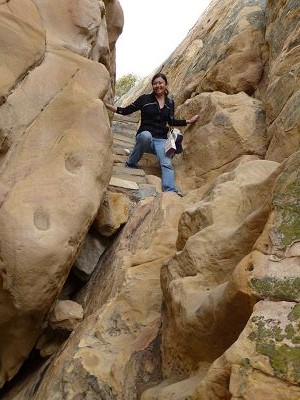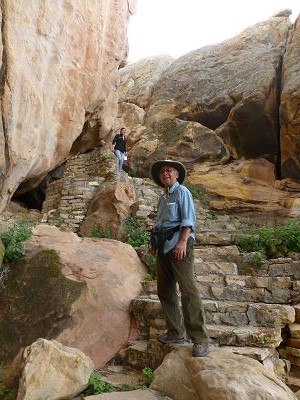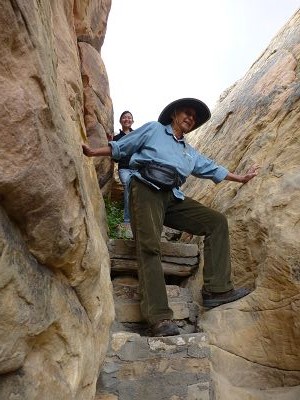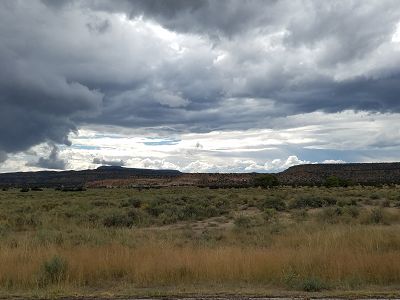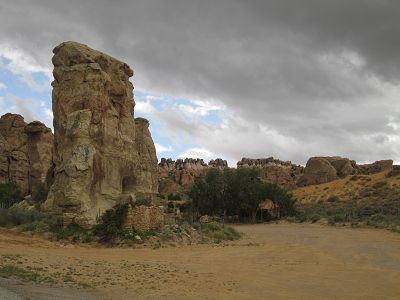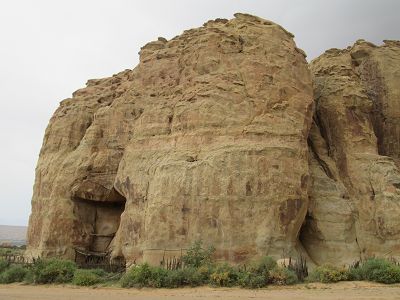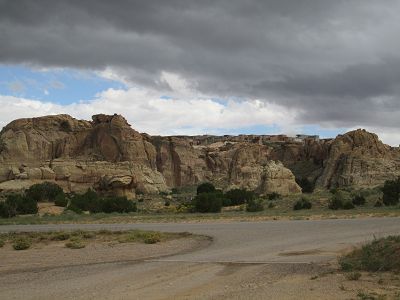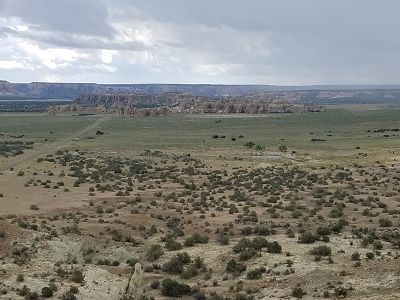|
Acoma "Sky Village" is a still-occupied pueblo. The Acoma Pueblo tribe is a federally recognized tribal entity. The Acoma have continuously occupied the area for over 2000 years, making this one of the oldest continuously inhabited communities in the United States.
| ||
| Approaching | Edge | Descent from Acoma |
| Acoma Tour | Rainwater puddle | Desert Level Attained |
| Mission San Esteban Rey | Views of Town | Farewell |
|
It is believed Coronado's expedition were the first Europeans to encounter the Acoma. Acoma was next visited by the Spanish 40 years later in 1581 by Fray Agustˇn Rodrˇguez and Francisco S nchez Chamuscado with 12 soldiers, 3 other friars, and 13 others including Indian servants. The Acoma at this time were reported to be somewhat defensive and fearful. This response may have been due to the knowledge of the Spanish enslavement of other Indians to work in silver mines in the area. However, eventually the Rodrˇguez and Chamuscado party convinced them to trade goods for food... When Onate visited on October 27, 1598, Acoma met him peacefully with no resistance to Onate's demand of surrender and obedience reported. Gaspar Perez de Villagra visited Acoma soon after Onate's departure by himself with a dog and a horse and asked for other supplies. Villagra refused to get off his horse and left to follow after Onate's party. Zutacapan convinced him to return to receive supplies. In questioning by Zutacapan, Villagra said that 103 armed men were two day away from Acoma. Zutacapan then told Villagra to leave Acoma. On December 1, 1598, Juan de Zaldivar, Onate's nephew, reached Acoma with 20-30 men and peacefully traded with them and had to wait some days for their order of ground corn. On December 4, Zaldivar went with 16 armored men to Acoma to find out about the corn. Zutacapan met them and directed them to the homes with the corn. The traditional oral Acoma narrative tells that a group attacked some Acoma women leading Acoma warriors to retaliate. The Spanish documents do not report an attack on the women and say that the division of the men was a reaction to Zutacapan's plan to kill Zaldivar's party. The Acoma killed 12 of the Spaniards including Zaldivar. On December 20, 1598, Onate learned of Zaldívar's death and after encouraging advice from the friars planned an attack in revenge as well to teach a lesson to other pueblos. Acomas requested help from other tribes to defend against the Spanish. Among the leaders were Gicombo, Popempol, Chumpo, Calpo, Buzcoico, Ezmicaio, and Bempol (a recruited Apache war leader). On January 21, 1599, Vicente de Zaldovar (Juan de Zaldovar's brother) reached Acoma with 70 soldiers. The Acoma Massacre started the next day and lasted for three days. On January 23, men were able to climb the southern mesa unnoticed by Acoma guards and breach the pueblo. The Spanish dragged a cannon through the streets toppling adobe walls and burned most of the village killing 800 people (decimated 13% of the 6,000 population) and imprisoning approximately 500 others. The pueblo surrendered at noon on January 24. Zaldovar lost only one of his men. The Spanish amputated the right feet of men over 25 years old and forced them into slavery for 20 years. They also took males aged 12-25 and females over 12 away from their parents putting most of them in slavery for 20 years. The enslaved Acoma were given to government officials and various missions. Two other Indian men visiting Acoma at the time had their right hands cut off and were sent back to their respective Pueblos as a warning of the consequences for resisting the Spanish. On the north side of the mesa, a row of houses still retain marks from the fire started by a cannon during this Acoma War. Survivors of the Acoma Massacre rebuilt their community 1599-1620. Onate forced the Acoma and other local Indians to pay taxes in crops, cotton, and labor. Spanish rule also brought Catholic missionaries into the area. The Spanish renamed the pueblos with the names of saints and started to construct churches at them. | ||
